Horse Discovery - Equipment

Equipments by Type

A clinch cutter is used by farriers to remove all nail clinches before removing the horse shoe.
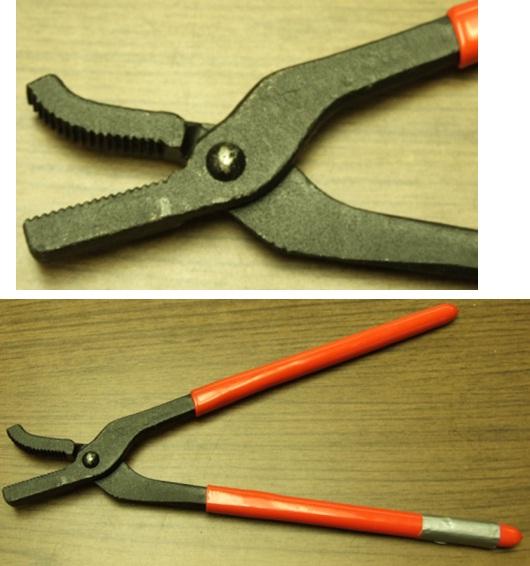
A clincher is used to bend the clinches flat against the hoof wall.

A crease nail puller is used by farriers to remove one nail at a time from the hoof. It reduces damage to the hoof wall.

Used by farriers to drive nails when shoeing a horse. The claw end of the hammer head is used to wring or twist off the nails.

A rasp is used by farriers to smooth a horses foot after the excess hoof wall has been removed during trimming.
The rasp has two sides. The rough side is used for rasping the hoof. The smoother side for final leveling and for finishing the clinches.
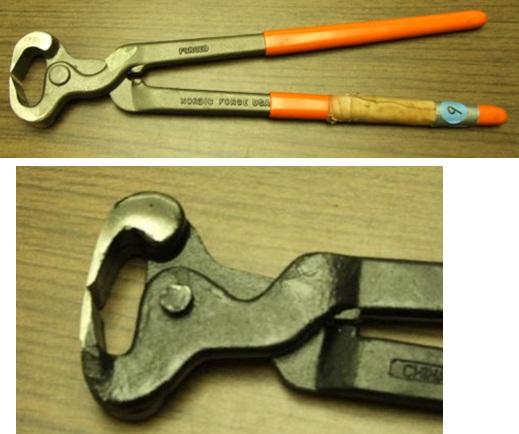
Hoof or cutting nippers have two sharp edges that are used for removing excess hoof wall.

A pull off or farrier’s pincers look very similar to hoof nippers but are used to pull nails or shoes from the foot. They may also be used to clinch the nails.
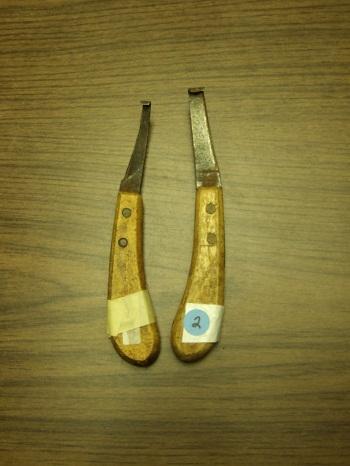
Hoof knives are used by farriers to trip the excess frog, cut out corns, and remove dead sole scales.
Hoof knives can be purchased with a wide or narrow blade, with one or two sharp edges, or to be used by a right or left handed farrier.

A loop knife is used to carve a hole in the sole of the horses hoof to allow for drainages of infective areas, such as abscesses.
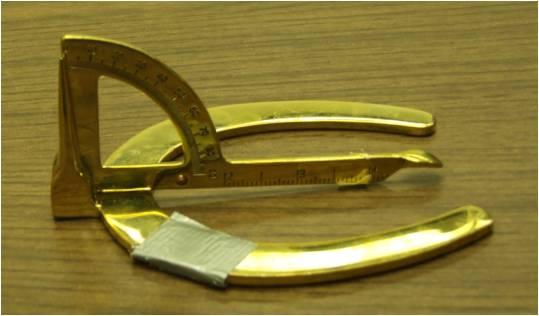
A hoof gauge is also called a horse angle. It is used to provide the farrier with an easy way to trim matching pairs of hooves with identical angles.
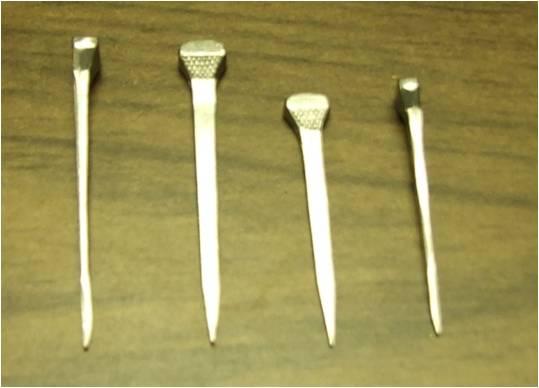
Horse shoe nails are, as seen in this picture, made so that one side of the shank is flat and the other is concave.
The nail head is roughened on the same side of the nail as the bevel.
There are many different types and sizes of hoof nails.
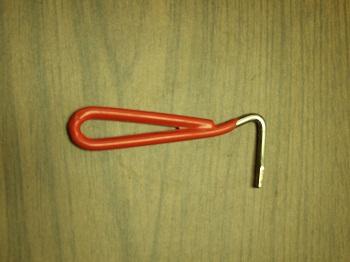
A hoof picker is used for the regular, daily cleaning of the horses hoof to remove dirt, manure, and other foreign material from the sole and the crevices between the frog and base.
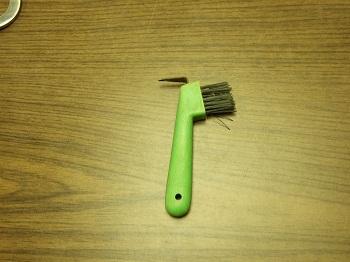
A hoof picker is used for the regular, daily cleaning of the horses hoof to remove dirt, manure, and other foreign material from the sole and the crevices between the frog and base.
The brush is used to remove dirt on the bulbs of the heel.
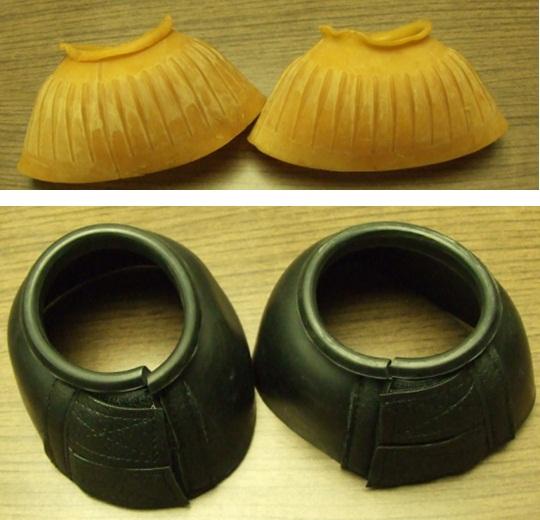
Bell boots protect the blub of the heel and lower pastern of the horse.
They can be used to prevent sprung of lost shoes.
Velcro closures allow the horse to break free if they become entangled while wearing their bell boots.
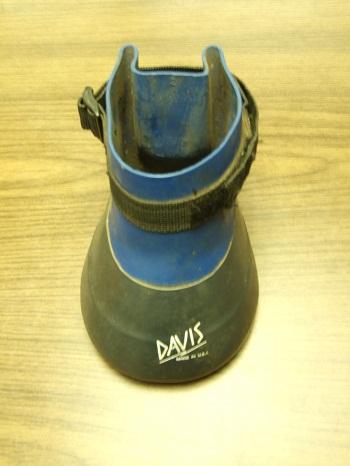
A soaking boot is used to soak the horses foot when the horse has conditions such as abscesses, puncture wounds, thrush, or other foot conditions. This boot is much easier to use than a bucket, which does not allow the horse to move.
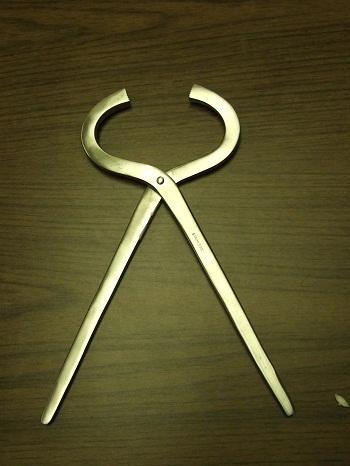
A hoof tester is used to find a horses source of lameness by putting pressure on the hoof.
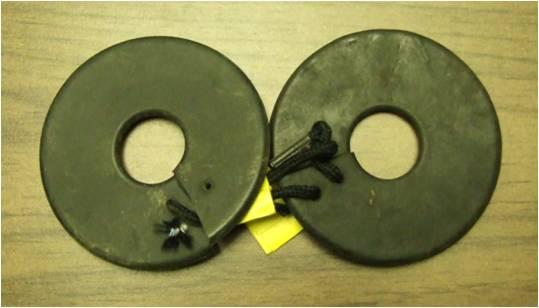
Bit guards are used on bits to keep them from pinching a horse’s lips or cheeks. They are placed on the bit between the bridle rings and the skin.
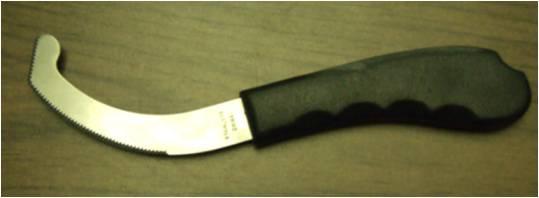
A bot knife is used to remove bots from a horse by scrapping the serrated end along the leg to remove them.
Bots are small eggs, laid by Gadfly flies on the horses, leg, chest and belly area. When hatched, the larvae will enter the horse’s nose and move into the digestive tract.
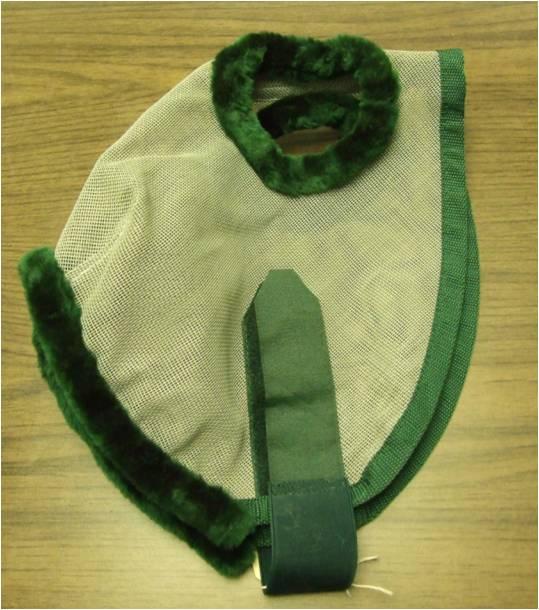
A fly mask is used to protect the horses face, including eyes , nose and ears, from flies. Flies can cause allergy problems, infections, irritated eyes, and scabs.
A fly mask can also protect light colored skin and eyes from harmful sun rays.

A chain twitch is used to calm or restrain a horse. The chain loop is placed around the horse’s upper lip and is twisted. This applications triggers the release of endorphins to relieve pain and calm the horse. It should not cause the horse discomfort.
Rope Twitch:
Humane Twitch:
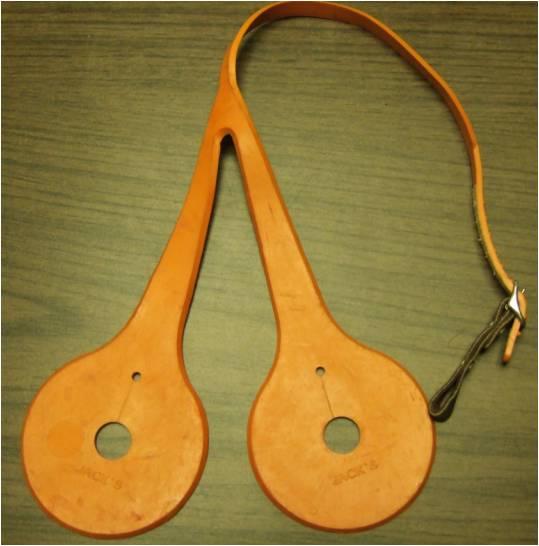
An Australian checker is used to prevent the horse from putting his tongue over the bit. It also keeps the bit high in the horses mouth.
The two circles fit around each end of the bit with the two steps connecting at the top of the horses nose and running between the horses eyes and ears.

A yolk is used on a racehorse during training. It works as a running martingale with the reins running through the rings.
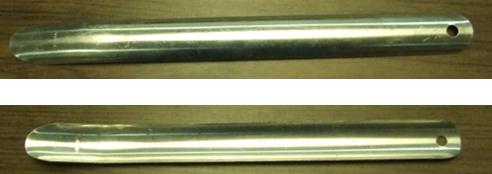
A sweat scraper is used to remove excess water from the coat to help dry the horse.
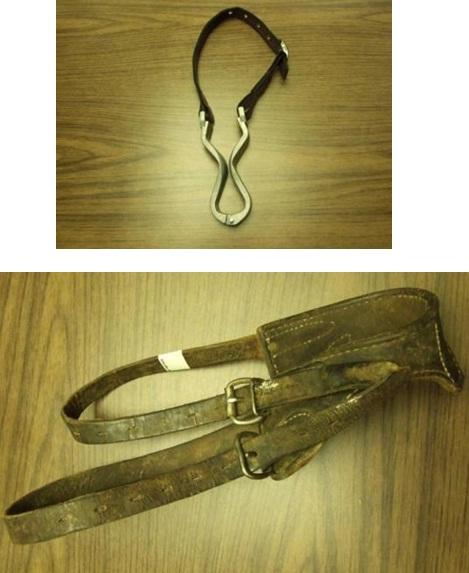
A Miracle collar features an anatomically correct fit for the horse and only applies pressure when the horse attempts to crib. It can be worn comfortably while the horse is being ridden, drinking, grazing, or eating.
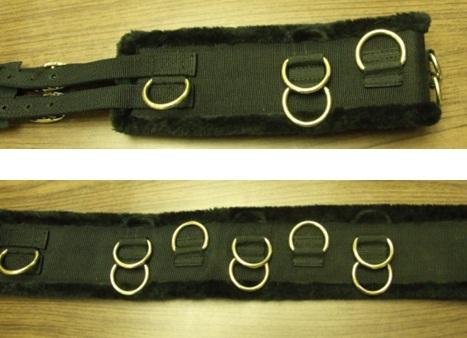
A surcingle is a belt that passes over the saddle and girth. It is typically made of leather or nylon with buckles and metal rings in a variety of locations. These rings allow driving lines to be ran from a bit and side reins to be attached. An overcheck and crupper can be attached to the rings on the top of the surcingle.

Once you have read through the Equipment section on our Horse Discovery page, you can test your knowledge here. The quiz will provide automatic grading and reveal the correct answers for learning purposes.
Take the Equipment Knowledge Check here.
Did you score an 80% or higher? Congratulations! Email anna.draeger@uky.edu with a screenshot of your score to receive your celebratory Certificate of Completion for the Equipment section.
Horse Discovery Navigation |
